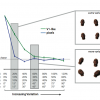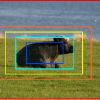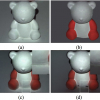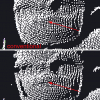CVPR
2009
IEEE
15 years 7 months ago
2009
IEEE
In recent years, large databases of natural images have
become increasingly popular in the evaluation of face and
object recognition algorithms. However, Pinto et al. previously
...
CVPR
2009
IEEE
15 years 7 months ago
2009
IEEE
This paper discusses the question: Can we improve the recognition of objects by using their spatial context? We start from Bag-of-Words models and use the Pascal 2007 dataset. We u...
CVPR
2009
IEEE
15 years 8 months ago
2009
IEEE
We generalize reflection symmetry detection to a curved
glide-reflection symmetry detection problem. We propose
a unifying, local feature-based approach for curved glidereflectio...
CVPR
2009
IEEE
15 years 8 months ago
2009
IEEE
Global shape information is an effective top-down complement
to bottom-up figure-ground segmentation as well
as a useful constraint to avoid drift during adaptive tracking.
We p...
CVPR
2009
IEEE
15 years 8 months ago
2009
IEEE
A Bayesian marked point process (MPP) model is developed
to detect and count people in crowded scenes. The
model couples a spatial stochastic process governing number
and placem...
CVPR
2009
IEEE
15 years 8 months ago
2009
IEEE
Head pose and eye location estimation are two closely
related issues which refer to similar application areas. In
recent years, these problems have been studied individually
in ...
Publication
One of the principal bottlenecks in applying learning techniques to classification problems is the large amount of labeled training data required. Especially for images and video, ...
CVPR
2009
IEEE
15 years 8 months ago
2009
IEEE
The ability to constrain the geometry of deformable models for image segmentation can be useful when information about the expected shape or positioning of the objects in a scene i...
Publication
We propose a method to control the luminance distribution on a scene by modeling the light propagation with direct and indirect components separately. To reduce the measurement tim...
Publication
We propose a method to accurately measure the shape
of objects by suppressing the effect of indirect reflection caused by the interreflection
and subsurface scattering. We use a ...




